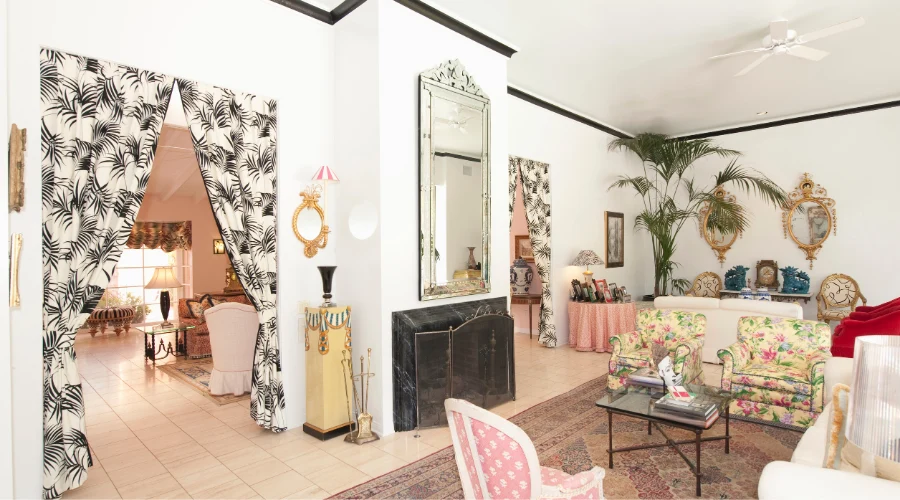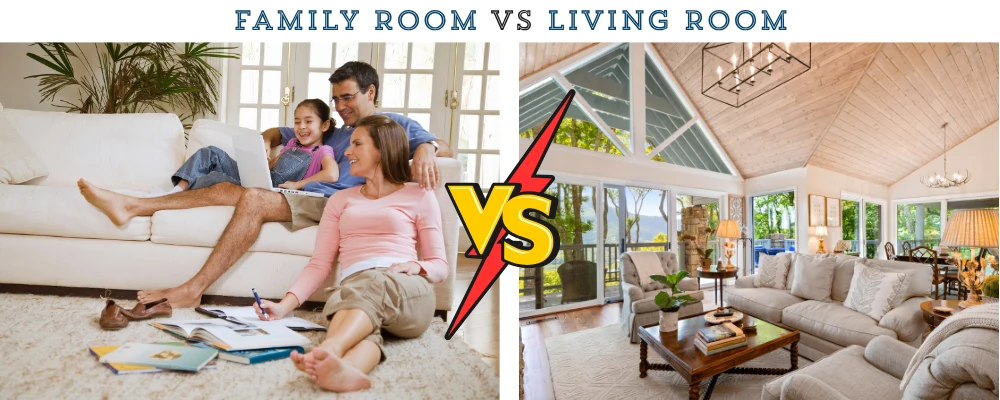So, are you confused about whether to designate a family room or living room within your home? True: both rooms do serve as living quarters, though their usage and design are quite different. Differences between family rooms and living rooms are important to be aware of in order to make a totally informed decision as to which choices fit your house and lifestyle. Let us take an in-depth dive into finding differences between the two, considering various factors.
Overview of Family Room

A family room is a casual space for family gatherings and relaxing, offering more privacy. These rooms are placed on the backside of the house, often near the kitchen. Family rooms are open spaces that allow transition to other rooms. Most of the rooms are interconnected without any separation, making them livable, and approachable. The furniture is typically centered around the TV and other entertainment systems.
Key Advantages of Family Room
- A place for relaxation and comfort that allows lounging, watching TV, and playing games to provide casual comfort.
- This room can accommodate various activities like playing games, relaxing, working, reading, and hosting private parties, with open space for movement.
- Design more durable and child-friendly, that is suitable for active playing, especially for kids.
Overview of Living Room

A living room is typically placed at the front of the house, near the entrance. These rooms are designed formally, yet with expensive furniture, decorations and antiques to make the first impression. This room is also calles the front room, and most of the houses consider it as one of the more precious rooms in the house. The living room is often designed to accommodate guests, to create conversation, and to socialize.
Key Advantages of Living Room
- Showcase the aesthetics of the home with more refined furniture and decor, suitable for hosting special occasions and creating first impressions.
- The seatings are focused on encouraging conversations facilitating interaction among guests, and socializing.
- They offer sophisticated looks incorporating higher-end materials, artwork, and decorative elements.
Key Differences Between Family Room and Living Room
| Feature | Family Room | Living Room |
| Purpose | Designed for casual and family-focused activities like family gatherings, relaxation, and entertainment. | Designed for more formal, guest-oriented entertainment purposes like formal entertaining and socializing. |
| Design Style | More relaxed, comfortable and functional. | More formal, elegant and stylish to create an accommodating atmosphere. |
| Furniture | The furniture is more casual, modular and comfortable, comprising sofas, armchairs, and recliners, centered around a TV. | The furniture is more structured with formal sofas, chairs, and coffee tables arranged for conversation and socialization. |
| Location | Placed at the back of the house, often near the kitchen or dining area. | Placed at the front of the house, close to the entryway. |
| Decor | More casual, and comfortable, and may include family photos, and personal items. | More formal, may include artworks, antiques, and decorative accessories. |
| Layout | The layout is open, promoting easy flow and connection to other rooms. | The layout is more segmented or structured |
Design, Aesthetics and Decor
Family rooms are primarily designed for sophistication and versatility, featuring large, comfortable seating and modular furniture. They are often centered around TV, and are often other family essentials.
On the other side, living rooms are designed for aesthetics and sophistication with formal, luxurious furniture settings, elegant lighting, coffee tables and artworks for socialization and accommodating guests.
Space, Planning and Layout
Family rooms are more spacious and flexible. They are designed in a way of accommodating family members and performing various family activities. It offers more privacy, being placed in the backside of the house, and giving access to move from one room to another.
When it comes to the living room, they are positioned near the entrance of the room, to create the first impression. They may be larger and more formally arranged to welcome guests, facilitate conversation and for having social interaction.
Structural Elements and Materials
The family room may include structural elements like TV, bookshelves, plush carpets, sturdy furniture and other family essentials to provide the comfort.
In contrast, the living room may feature more refined materials like hardwood floors, and elegant wood furniture to enhance the formal ambience. It can also include arts, antiques, and a coffee table.
Lighting and Electrical Needs
The family room often uses overhead lighting to create a casual atmosphere. Entertainment devices such as TVs, and gaming consoles are often placed in this room, which requires electricity.
On the other hand, the living room encompasses table lamps, floor lamps to create a sophisticated ambiance. The electrical needs are focused on decorative lighting and occasional use of entertainment systems.
Conclusion
Choosing the right room between a family room and a living room depends on your housing needs. Both serve as the central areas for different housing needs. A family room is ideally allocated for day-to-day living, with comfort and functionality foremost. The living room is set aside for more formal affairs, such as formal gatherings and even beauty. Knowing the primary differences offers the means of defining the ideal place for your home.

